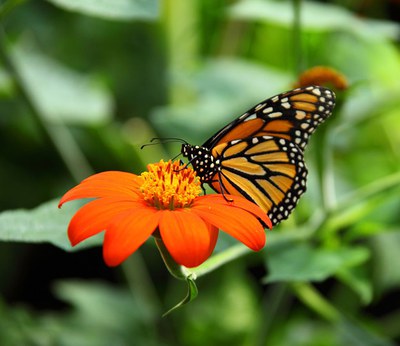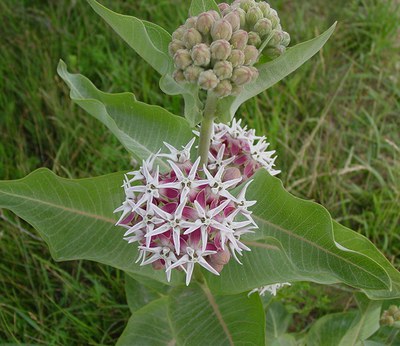
You may have fond childhood memories of chasing butterflies in your yard or in the woods. If you grew up east of the Rockies, that butterfly was probably a monarch, one of the most common and most recognizable species in the Americas. So common in fact that maybe they didn’t really seem that special.
Fast-forward to the present and monarchs are facing a different reality. Whether you live east or west of the Rockies, monarch populations have dropped primarily due to habitat loss. So there was a lot of excitement when Stewardship Director Amanda Egertson spotted a monarch at the Whychus Canyon Preserve last year. Amanda’s sighting is the only monarch sighting we know about at any of the Land Trust Preserves!
Monarchs rely exclusively on milkweeds to lay their eggs and as a food source for their caterpillars. Dwindling milkweed populations across the country have reduced the number of monarch butterflies we see today. With the next phase of the restoration of Whychus Creek set to begin in July, we are keeping monarchs in mind. 
You too, can help monarch populations in your own backyard! Backyard pollinator gardens contain a variety of native plants that monarchs can use for nectar, and if you include the two native milkweed species mentioned above, you will provide the host plants monarchs require to lay their eggs. Make sure if you are purchasing milkweed from a nursery, you are getting the native species as some nurseries will sell species that will not improve monarch habitat. Including plants that will provide food for the butterfly will also be important. Many resources are available, including information from Monarch Advocates of Central Oregon (MACO). See a few more helpful links below.
Interested in learning more about the restoration along Whychus Creek or supporting our efforts to protect and improve habitat? Read more about the Campaign for Whychus Creek, or make a donation now to help continue the effort!
Resources:
- Monarch Joint Venture: Gardening for Monarchs
- Xerces Society: Milkweed Seed Finder (search by state and species desired)
- Natural Resource Conservation Service: Great Basin Pollinator Plants


